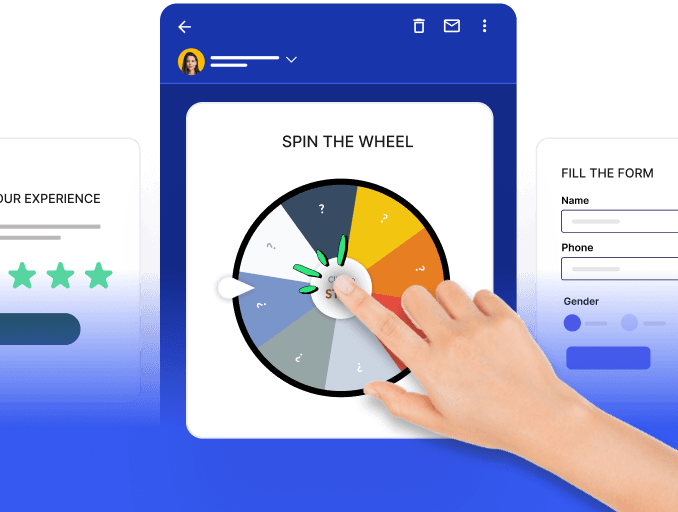Imagine browsing through online stores and adding items to your wishlist or cart. But what prompts you to complete a purchase? Every completed purchase is a conversion for the store owner. Your journey—exploring websites, considering offerings, checking reviews, and eventually making a purchase—is guided by an e-commerce funnel, which is crucial for conversions.
Understanding how genuine customers navigate online shopping is pivotal to optimizing your ecommerce conversion funnel. This journey significantly impacts conversion rates from visitors landing on your page to the decisive 'buy' click.
This guide will cover the ecommerce conversion funnel, the different stages, and a comprehensive answer to how to analyze your ecommerce conversion funnel.
Table of Contents
What is an ecommerce conversion funnel?
An ecommerce conversion funnel represents the step-by-step journey that potential customers take when engaging with an online business or website. It delineates the process from the initial interaction to the final conversion, typically the purchase or desired action.
But not every visitor purchases on the first visit. This prompted ecommerce stores to have a conical funnel. The beginning of the funnel widens, encompassing the entirety of site visitors. As it progresses downward, the funnel gradually contracts, signifying that only a fraction of the initial visitors convert into paying customers.
Stages of an ecommerce conversion funnel
A typical funnel encompasses three to four stages, each tailored by brands to align with their unique marketing strategies. One brand might use social media to foster awareness and user-generated content (UGC) to drive conversion. In contrast, another might employ UGC to heighten awareness and leverage social media channels for conversion. The approach varies based on individual brand preferences and objectives within the marketing funnel.
1. Acquisition
Acquisition in e-commerce refers to gaining new customers or visitors to an online store through various marketing channels and strategies. It involves attracting potential customers and bringing them to the website to purchase or engage with the brand.
Key markers of acquisition
Signs that a customer for your e-commerce store is in the acquisition stage include:
Customer actively visiting your website.
Active Interactions with ads, social media posts, or content related to your products, indicating initial interest.
Providing contact details while signing up
Key customer acquisition metrics
The metrics used to track acquisition in the ecommerce conversion funnel are as follows:
Customer acquisition cost (CAC): This metric measures the cost of acquiring a new customer and is crucial for assessing marketing efficiency and profitability
Website traffic: The total number of visitors to the e-commerce site. Monitoring traffic helps evaluate the effectiveness of marketing strategies and overall brand visibility
Customer lifetime value (CLV): This metric predicts the total revenue a business can expect from a customer throughout their entire relationship. It helps justify acquisition costs and guides long-term strategy
What are the marketing channels used to acquire customers?
E-commerce stores utilize various marketing channels to acquire customers:
Engaging content through blogs
Targeted ads on social media like Facebook, Instagram and Twitter
Collaborations with popular social media influencers
3 effective strategies to maximize acquisition
To optimize the funnel at this stage:
Gather feedback: Ask site visitors how they discovered your website and identify emerging trends to pinpoint successful marketing approaches during the discovery phase.
Use data to gain insights into visitor's experiences: Acknowledge that every customer’s journey is unique and may involve diverse pathways to discover the brand to gain insight into various customer experiences.
Craft high-impact and cost-effective strategies: Utilize the qualitative insights from analytics to craft strategies such as marketplace presence, price comparison sites, and influencer collaborations that help widen the customer base.
2. Engagement & Monetisation
Engagement in e-commerce refers to the interaction and involvement of users or customers with an online store or platform. Visitors' and users' interactions with a website or app reflect their interest, satisfaction, and involvement.
The purchase stage falls under monetization and refers to the specific phase within the customer journey where a potential buyer progresses from considering a product or service to making the actual transaction or purchase.
Key markers of engagement and monetization
Here are signs indicating that customers are in the engagement and purchase stages in ecommerce:
Customers actively research and compare products/services, exploring different options before making a decision
They show interest in educational content like blogs, reviews, or comparison guides to gain more insights
They actively add products to the cart or wishlist, which signals their intent to purchase
Customers start the checkout process by entering shipping or payment information
Vital metrics to measure engagement and monetization
The metrics used for measuring engagement & monetization include,
Bounce rate: The percentage of visitors who leave the website without engaging further after viewing only one page.
Average session duration: The average time visitors spend on the site, reflecting their level of interest and engagement.
Pages per session: The average number of pages a visitor views during one session, revealing the depth of interaction on the site.
Click-through rate (CTR): The percentage of users who click on a specific link, ad, or call-to-action after viewing it.
Total revenue: The total revenue generated from ecommerce purchases, in-app purchases, subscriptions, and advertisements, minus any refunds given.
Purchase revenue: The total amount of revenue generated from ecommerce and in-app purchases.
First-time purchasers: The number of unique users who made their first purchase.
What marketing tools or channels can help engage and monetize users?
Several marketing tools and channels are instrumental in engaging and monetizing users in e-commerce:
Email service providers (ESPs): ESPs like Mailmodo offer robust email marketing solutions to personalize communication, drive engagement, and promote sales
Engagement optimization tools: Optimization tools such as heatmaps, can help understand where customers click, provide session recordings, and analysis of websites or funnels.
SEO and analytics tools: Utilize tools like GA4 to help enhance website visibility, track user behavior, and improve marketing strategies.
User-engagement platforms: Employ platforms that help engage users through personalized app communications, analytics, and targeted messaging.
9 strategies to optimize engagement and monetization
Here's how you can optimize this stage of the funnel with the following:
Offer top-tier customer experiences: Intuitive interfaces reduce the platform's friction, prompting users to interact more actively and offer a seamless and pleasant user experience.
Implement AI-powered product recommendations: AI-powered recommendations tailored to individual user preferences, enhance engagement and increase the likelihood of a purchase.
Simplify and optimize the checkout process: You can do this by reducing steps, enabling guest checkout, and offering multiple payment options to improve the purchasing experience and reduce cart abandonment.
Use automated interactive email campaigns: They can be triggered by user behavior (like abandoned carts) to re-engage customers and prompt them to complete their purchases.
Use discounts, coupons, or loyalty programs: They incentivize purchases and encourage engagement at the funnel's purchasing stage.
Ensure a seamless mobile experience: It allows you to capture and retain mobile users, as a significant portion of online shopping occurs on mobile devices. Also, optimize website speed, design, and user interface for mobile responsiveness.
Use post purchase emails: Engage customers after purchase with follow-up emails, order confirmations, shipping updates, and post-sale support to encourage repeat purchases and build brand loyalty.
Implement retargeting ads: They remind users of products they viewed but didn't purchase, re-engaging them and encouraging conversions.
Showcase positive reviews and testimonials: Display reviews and testimonials on your site to build trust and credibility, nudging potential buyers toward purchasing.
3. Retention
While many believe that the funnel concludes at purchase, savvy marketers recognize that purchasers constitute a vital segment. Because these individuals possess immense value, they have the potential to re-engage, provide feedback, or advocate for your brand. Crafting strategic marketing approaches targeting these purchasers is one of the most lucrative activities with exceptional returns on investment.
Hence, in e-commerce, the retention stage concerns engaging existing customers to encourage repeat purchases.
Key markers of retention
The key markers of having a customer in the retention stage include:
Repeat purchases made by customers indicating loyalty and satisfaction with the products/services offered.
Active participation in loyalty programs showcasing interest in long-term engagement with the brand.
Positive reviews, testimonials, or feedback about the shopping experience and products indicating satisfaction and potential for loyalty.
Key retention metrics to measure customer engagement
Customer retention rate (CRR): The percentage of customers who continue to make purchases over a specified period, reflecting customer loyalty and satisfaction
Repeat purchase rate: The percentage of customers making more than one purchase, illustrating the effectiveness of your retention strategies in encouraging repeat business.
Average order value (AOV): The average value of orders placed, monitoring changes in customer spending habits, and identifying potential upselling or cross-selling opportunities.
Time between purchases: The duration between a customer's transactions, providing insights into their buying frequency and engagement level with the brand
What marketing tools or channels can help retain customers in ecommerce?
Several marketing tools and channels aid in customer retention for ecommerce businesses:
- Implement targeted and personalized email campaigns to engage customers with promotions, product updates, and exclusive offers
5 strategies to maximize retention
You can optimize the retention and post-purchase stages in ecommerce by following these strategies:
Provide personalized experiences: Tailor email campaigns, product recommendations, and offers based on customer behavior and preferences to enhance engagement and encourage repeat purchases.
Launch loyalty programs: Launch loyalty programs with rewards, points, or exclusive benefits for repeat customers to incentivize continued purchases and foster brand loyalty.
Implement loyalty programs: Do this to reward customers for continued engagement and purchases. Offer incentives such as discounts, exclusive deals, or early access to new products.
Provide exceptional customer support: Provide prompt and effective customer support, address queries, resolve issues promptly, and offer post-purchase assistance to ensure a positive shopping experience.
Use additional techniques: Utilize remarketing techniques like abandoned cart emails, targeted ads, and personalized offers to re-engage potential lost sales.
Takeaways
Optimizing your ecommerce conversion funnel mandates a clear understanding of how website visitors traverse through it. Combine quantitative and qualitative analytics data to unravel the mystery of low conversion rates. This funnel aids in unraveling the visitor’s preferences and pain points during their site experience while understanding the channels that hinder conversions. A thorough funnel analysis helps discern the pivotal factors that prompt their transition from visitors to valued customers.







